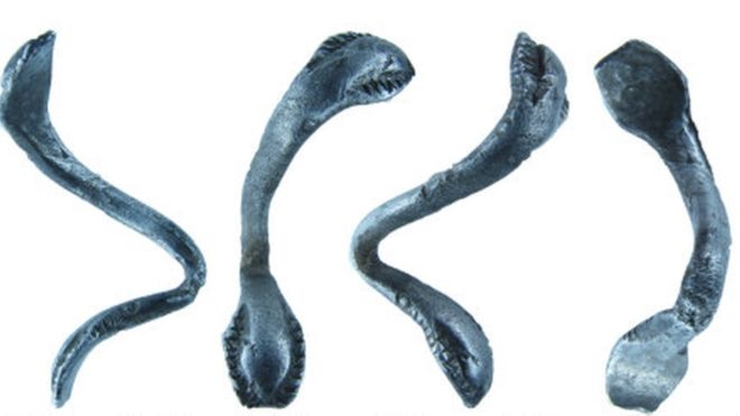Zajímavé, děkuji, a vůbec za všechny články. 
Roman ring with snake heads
Categories: Finds and rescue research abroad , Nálezy nejenom s detektorem ve Velké Británii a Irsku

The unusual-looking ring was discovered by a metal detectorist in Buckinghamshire, south-east England. The jewel has two snake heads touching each other. The coroner has already declared it a treasure, although it is bent in different ways and no longer looks like a ring.
Experts believe the ring may have been made by the same jeweller who made the jewels previously found within the Snettisham foundation. Located in the British Museum's database, it contained a number of Iron Age objects. It was named after the site of its discovery, namely the Snettisham area of Norfolk, England. The depot contains both finished and unfinished jewellery, as well as the raw materials needed for manufacture. Judging by the amount of silver, gold and carnelian found, the clients of the jeweller in question were indeed wealthy people.
"The newly discovered ring probably belonged to someone very rich. It is a very exciting find," said rising officer Sophie Flynn.
The Snettisham base was said to have been made by a jeweller. Or rather, that all the jewels found were made by one person. It was hidden in a container about 17.5 centimetres high sometime around 155 AD. It was discovered by workers in 1985 during construction work. The "snake" ring was found by a metal detectorist near Aylesbury, the capital of Buckinghamshire, which is less than 60 miles from London.
"Unfortunately it's warped so we don't know exactly what it originally looked like. But the main part has been preserved, namely the two snake heads, which is unimportant. The Snettisham hoard contained a number of jewels that also had such decoration. This led us to think that they were made by the same jeweller as the ring found in Buckinghamshire ," Flynn explained.
Catherine Johns writes in her book The Jewels of Romania that snake motifs were put on amulets because snakes were previously seen as a positive symbol associated with healing, rebirth and ancestry. The owner therefore probably wore it all the time. The snake was one of the most universal motifs and is found in almost all cultures. It is often associated with God because it has no eyelids. It is also a symbol of fertility, sin and vice.
"The ring we found is particularly rare because it has two snake heads, which is unusual. You won't find many pieces like this in the British Museum's database," Flynn noted, adding that the exact exact location of the find remains secret so it can be thoroughly investigated.
Source: www.bbc.com, https://newpaper24.com/
The article is included in categories:



